Sizing Heat Pumps And Domestic Hot Water (DHW)
UNE EN 12831-3
Our CEO, Antonio Blanco, a true visionary, often says there are eleven dimensions: nine spatial and two temporal, t1 and t2. The concept of nine spatial dimensions aligns closely with contemporary physics—three axes, each with three embedded subdimensions. However, the idea of two temporal dimensions, t1 and t2, is still debated. In the world of heat pumps (HPs) for Domestic Hot Water (DHW), though, it is a concrete reality.
In the HVAC field, the kilowatt (kW) has traditionally reigned supreme: system power in kW, climate control needs in kW, terminal units of a specific power capacity in kW. However, when we shift to HPs for DHW production, kilowatts lose their dominance, ceding importance to kilowatt-hours (kWh) and introducing our second time dimension, t2.
This shift may seem trivial, but thinking in terms of kWh isn’t easy for those used to operating in real-time and stretching that instantaneous power over a time continuum. While we’ve had glimpses of continuity with seasonal parameters, these have generally been a series of instant snapshots—power in frames. In HVAC, energy is produced and consumed, created and destroyed…a transient world of energy, or should we say, energy, as opposed to power. This distinction is essential: ENERGY, not power.
This second time (t2) redefines our approach. It’s a shift where energy takes precedence, and instantaneous power is secondary. In this dimension, ENERGY IS CREATED AND CONSERVED, accumulated rather than consumed immediately, with time no longer tending toward zero. The differential fades, and we produce for later use, not for immediate consumption.
This is the setting for DHW heat pumps: generating now for later, not creating power but energy, shifting from kW to kWh, from the consumable to the storable.
To that end, the RITE code refers us to the UNE EN 12831-3 standard, Energy performance of buildings – Method for calculation of the design heat load. Part 3: Domestic hot water system heat load and demand characterisation, Modules M8-2, M8-3, which specifies:
“IT 1.2.4.1.2.4 Preparation of hot water for sanitary purposes.
1. For the sizing of DHW systems, refer to:
a) Section HE4 and other relevant sections or appendices of the HE Basic Document of the Technical Building Code, where DHW demand is regulated.
b) Section HS 4, Water Supply, of the Technical Building Code.
c) UNE-EN 12831-3.”
However, this guidance often goes unnoticed—seldom discussed, rarely read. It’s highly useful, complex but visually descriptive, helping us conceptualize energy behavior. For context, this approach is inherited from Thermal Solar Installations, where low-power systems operating over extended periods meet demands that, if instantaneous, would require much higher power, making systems costly in terms of equipment and installation for HPs.
Consider a facility with a DHW demand profile like the one illustrated below:
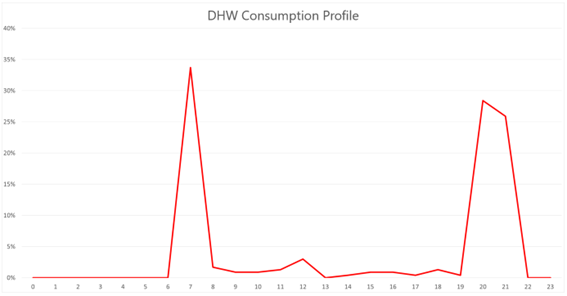
This consumption profile, though seemingly mundane, is the core of the calculation. If this information is not accurate, the entire calculation is pointless. This data must be obtained directly from the owner rather than relying on standard profiles. Later, we’ll highlight its importance.
For instance, take a hotel or a student residence with two peak consumption periods, morning and evening. Such facilities are challenging for a DHW HP, which would need high power output to meet this demand. Heating on-demand, as with boilers, is impractical and undesirable here.
Next, we convert these DHW demands into cumulative energy consumption, calculated minute by minute over a day:
The system requirements:
- Daily DHW Consumption (45°C): 15,000 liters
- Storage Volume: 10,000 liters
- Storage Temperature (°C): 60°C
- Usage Temperature (°C): 45°C
This yields the following graph:
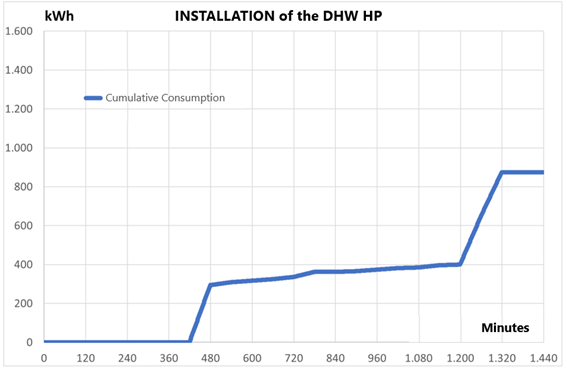
The Standard prescribes, through specific calculations, optimal and minimum energy levels in the DHW tank:
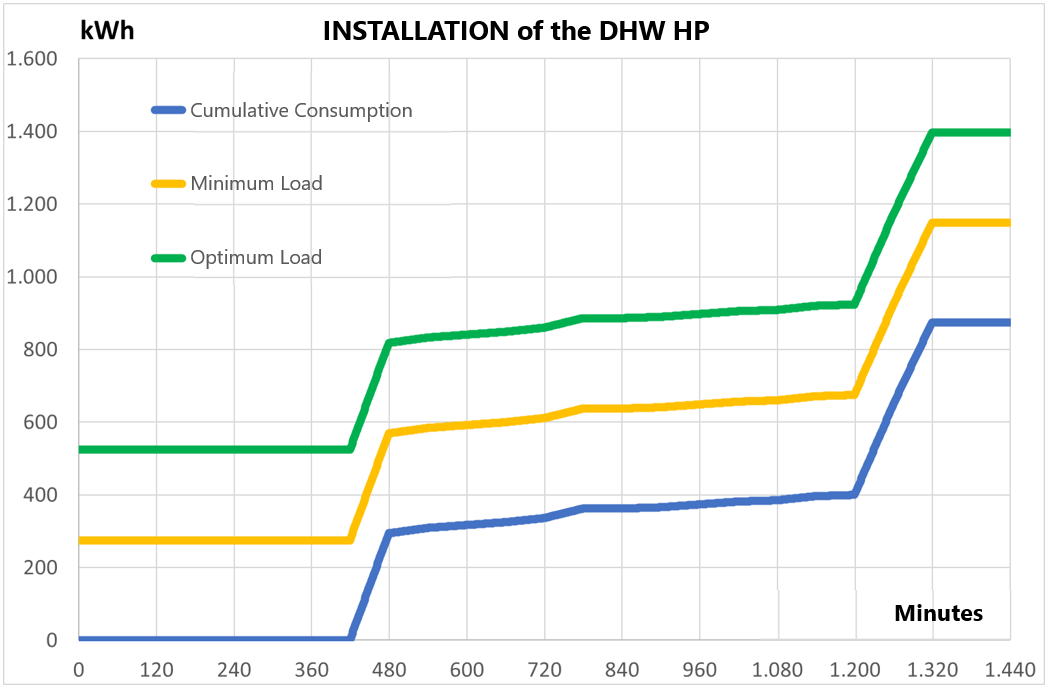
- Optimal Load: the target energy level to be maintained “constantly” in the storage volume to cover peak demand.
- Minimum Load: the minimum level to avoid dropping below, as it signals imminent service interruption.
With this framework in place, we can now assess the necessary HP capacity. Let’s consider three scenarios:
SCENARIO 1
- Daily DHW Consumption (45°C): 15,000 liters
- Storage Volume: 10,000 liters
- Storage Temperature (°C): 60°C
- Usage Temperature (°C): 45°C
- HP Power: 20 kW
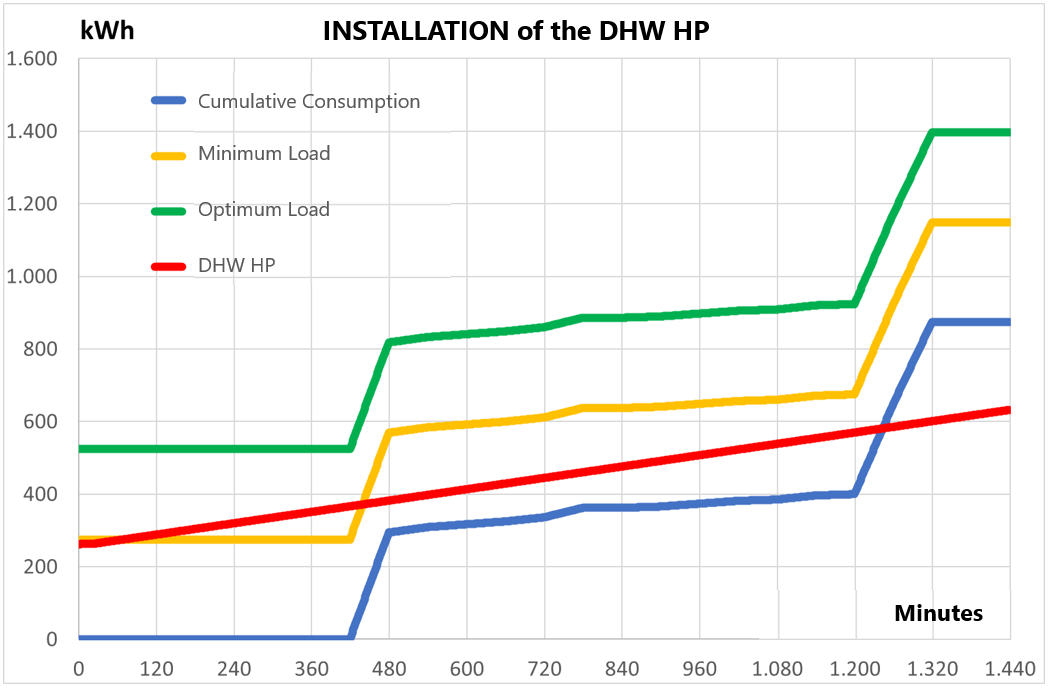
In this case, the HP is insufficient to meet demand:
- The storage’s minimum energy level is exceeded.
- Service disruption occurs due to inadequate power.
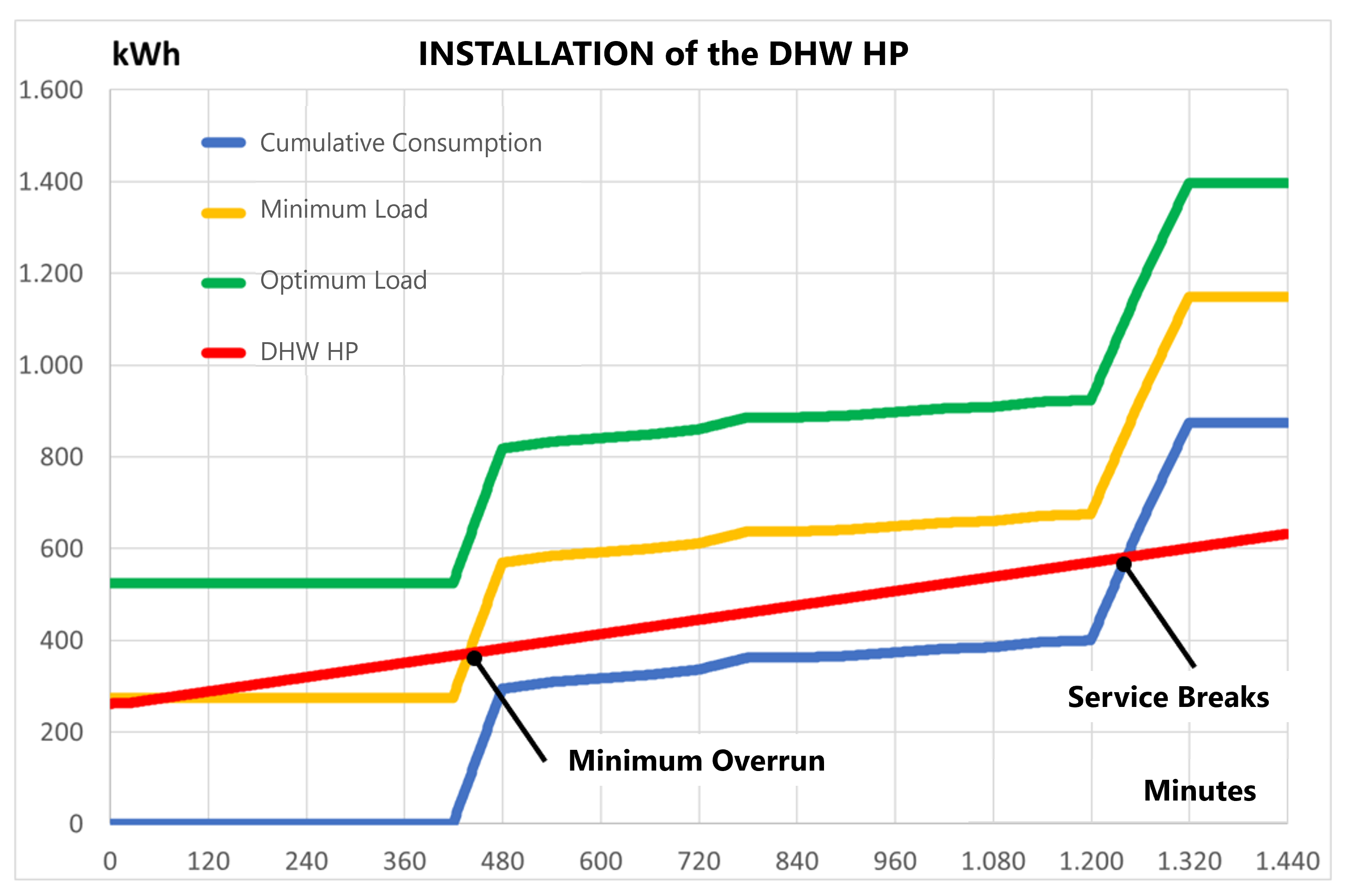
SCENARIO 2
- Daily DHW Consumption (45°C): 15,000 liters
- Storage Volume: 10,000 liters
- Storage Temperature (°C): 60°C
- Usage Temperature (°C): 45°C
- HP Power: 50 kW
Although better, this HP still falls short.
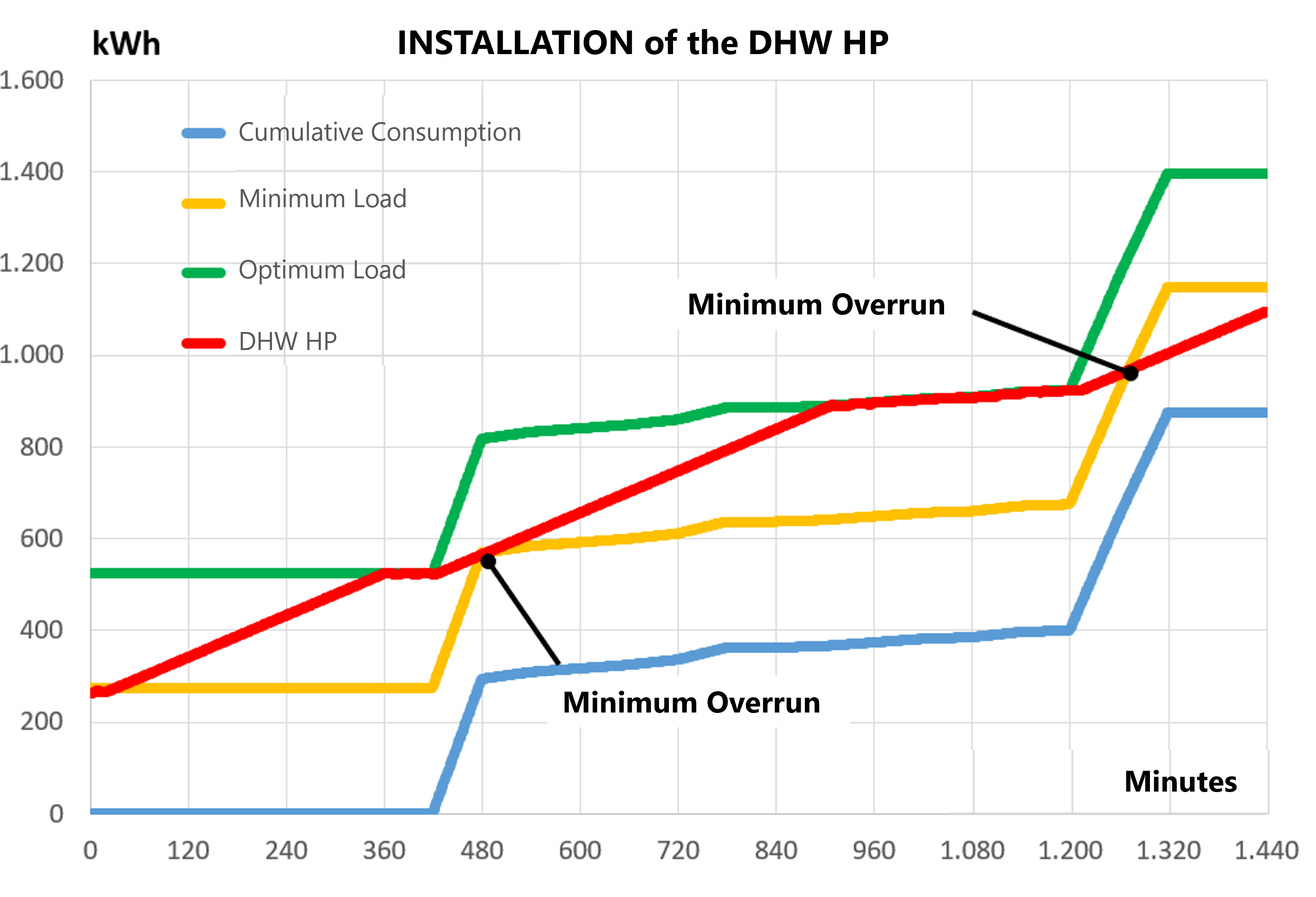
After 18.65 hours, it exceeds minimum levels but remains vulnerable to unexpected peak demand, risking service interruption.
SCENARIO 3
- Daily DHW Consumption (45°C): 15,000 liters
- Storage Volume: 10,000 liters
- Storage Temperature (°C): 60°C
- Usage Temperature (°C): 45°C
- HP Power: 150 kW
With 8.15 hours of operation, this HP aligns with required limits.
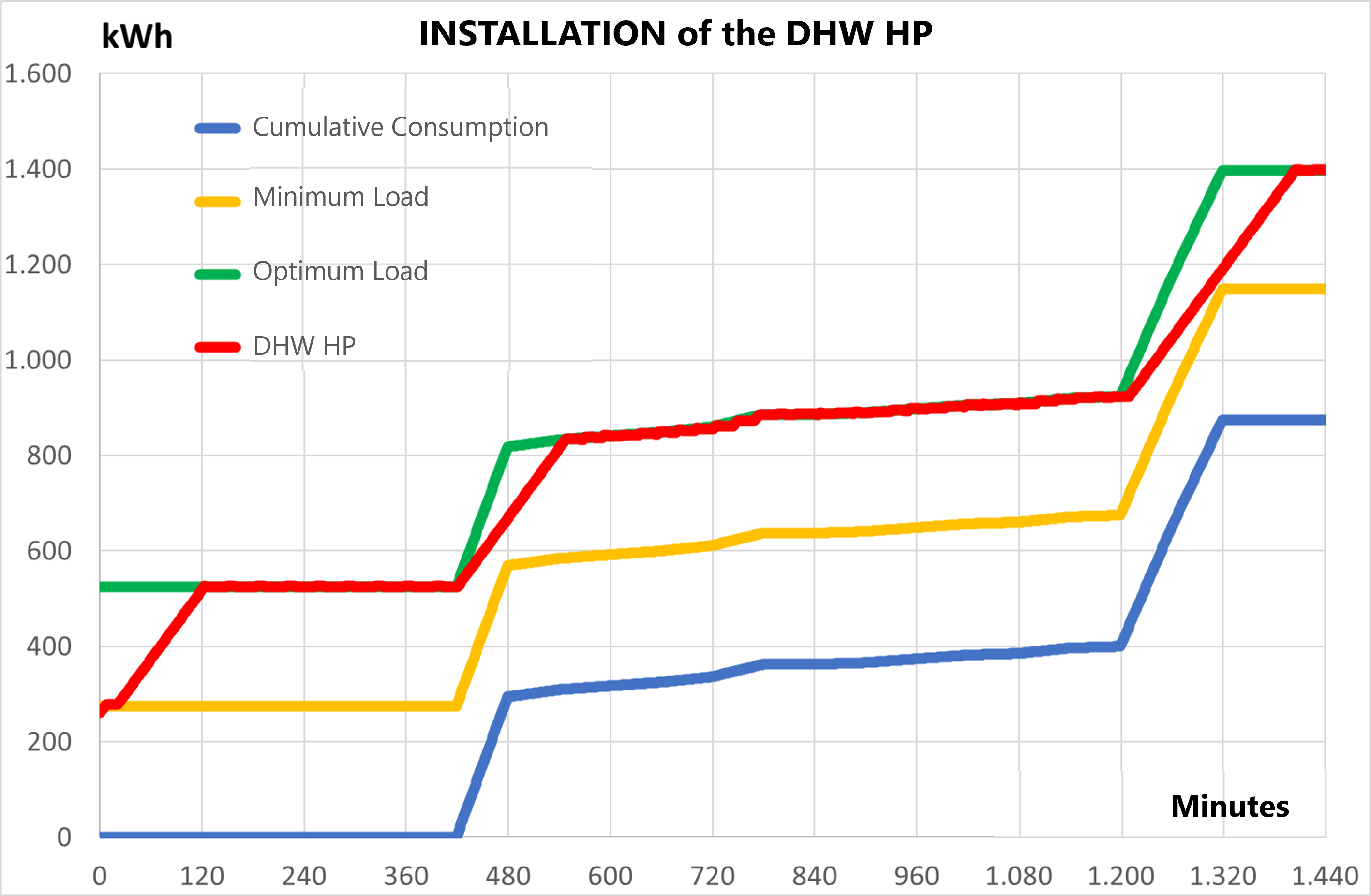
Is this the ideal solution? It depends on demand uncertainties. As previously mentioned, an accurate consumption profile is crucial.
What happens with a 20% peak increase?
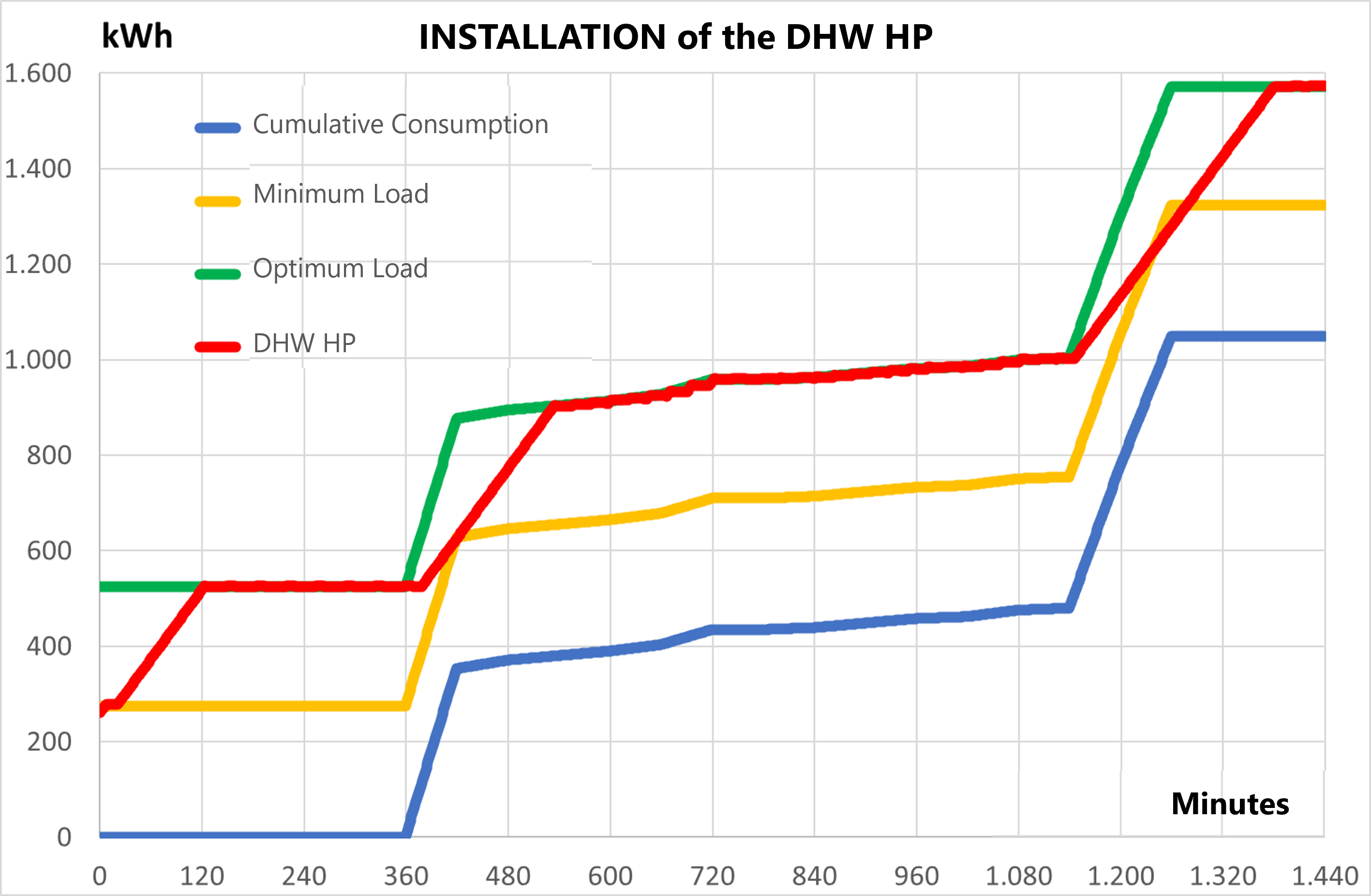
While it doesn’t lead to a complete service interruption, the system does exceed limits, which could be manageable but is far from ideal.
The responsibility here primarily rests on the DHW HP, but the storage volume remains a significant secondary factor. Let’s now consider a reduced storage volume of 4,000 liters.
SCENARIO 4
- Daily DHW Consumption (45°C): 15,000 liters
- Storage Volume: 4,000 liters
- Storage Temperature (°C): 60°C
- Usage Temperature (°C): 45°C
- HP Power: 150 kW
With a smaller storage volume, operational flexibility is significantly reduced, leading to service interruption.
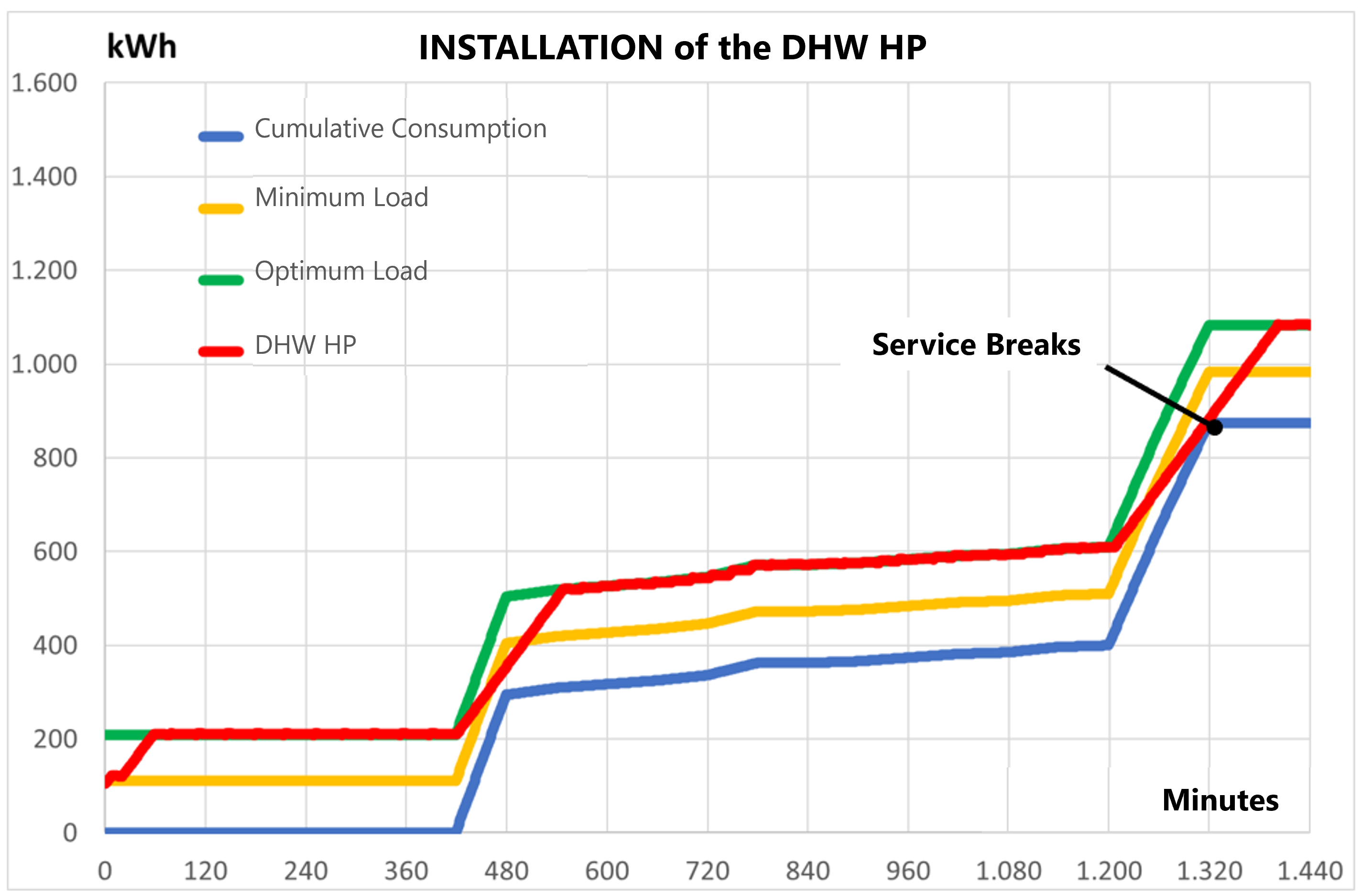
CONCLUSIONS:
- An accurate demand profile is essential for correctly sizing both the DHW HP and storage volume.
- The HP-storage pairing should be balanced.
- HP power conceals operational hours that may increase long-term system costs.
More articles
Interested in other (technical) knowledge articles? Keep yourself up to date and read them all

